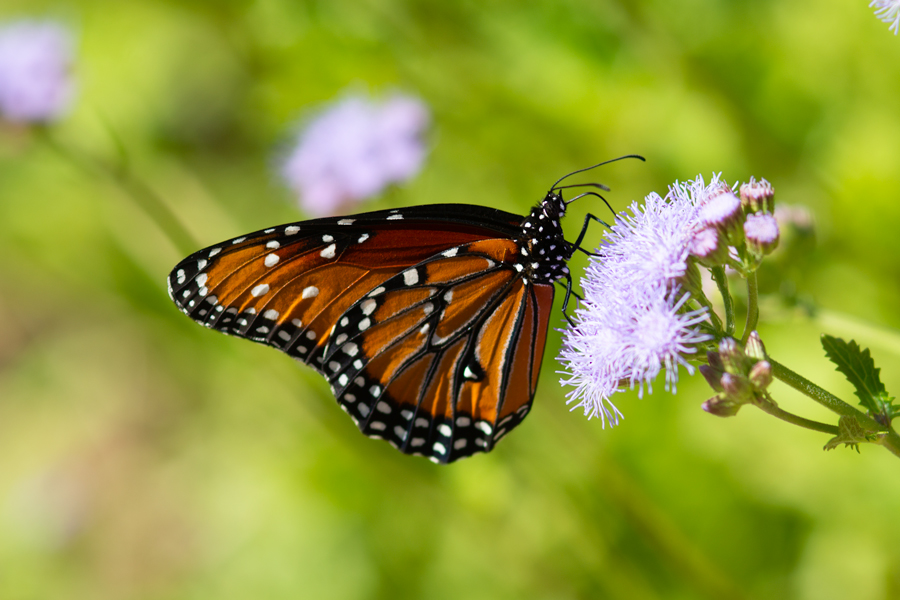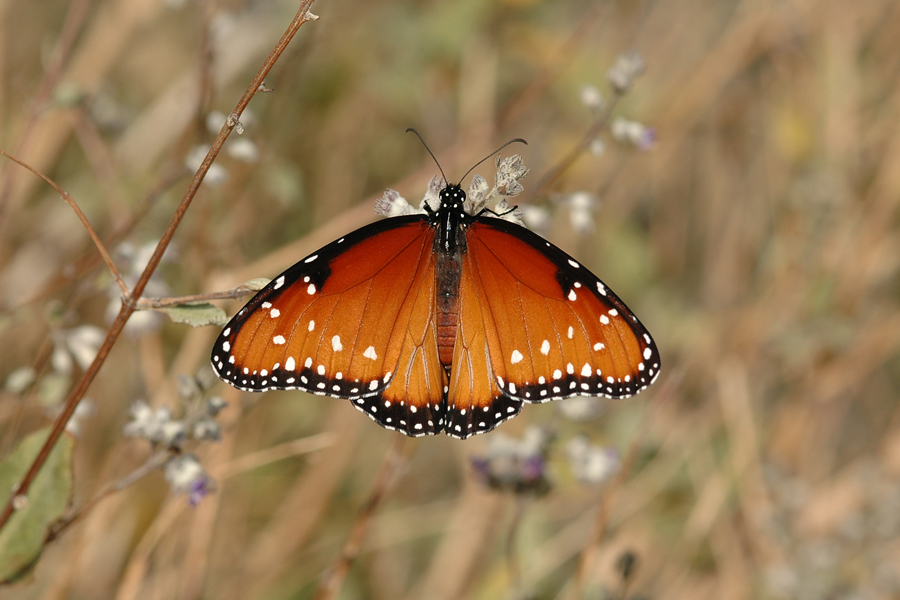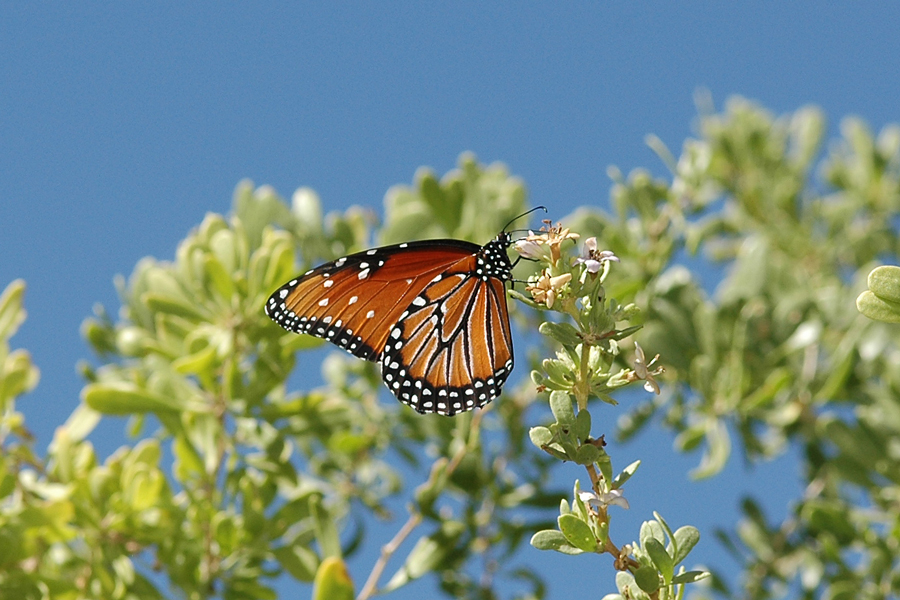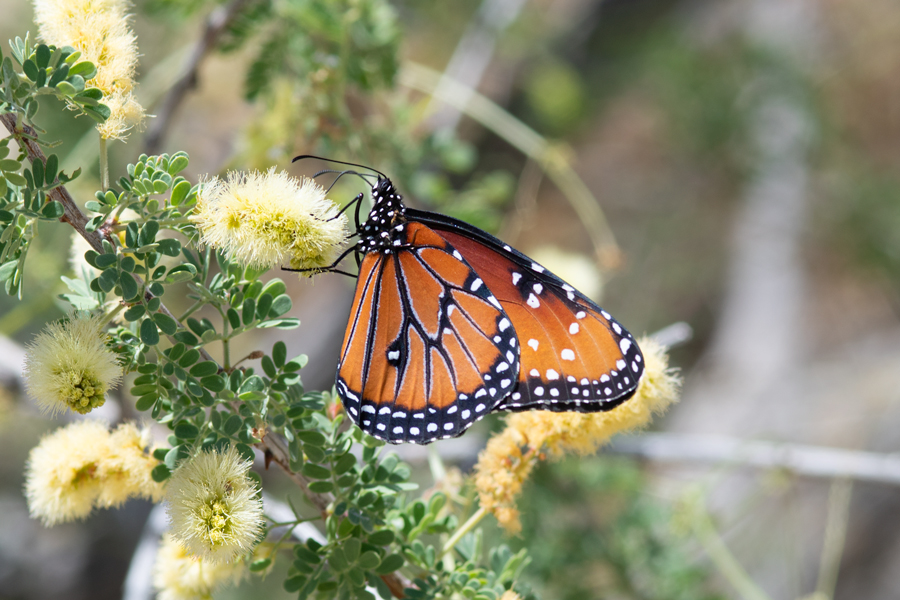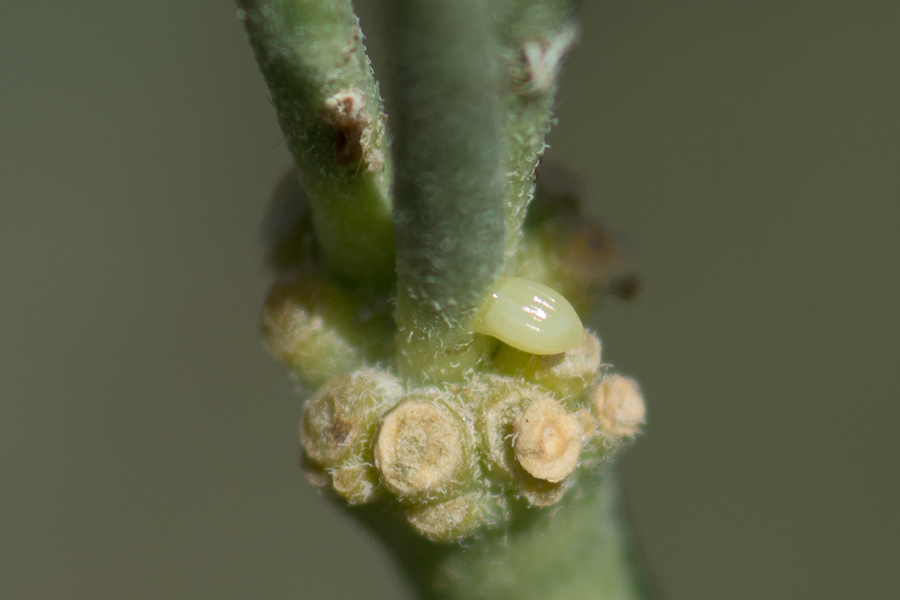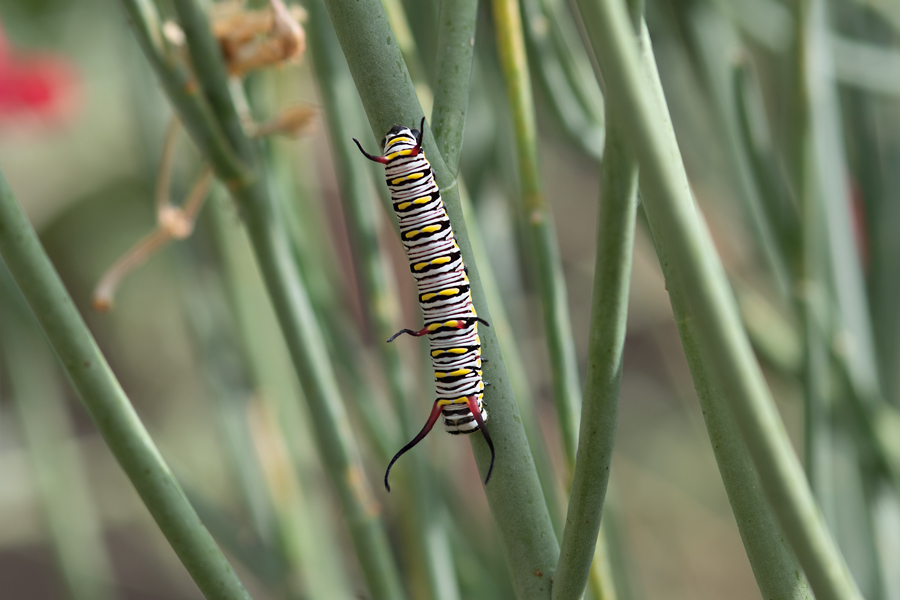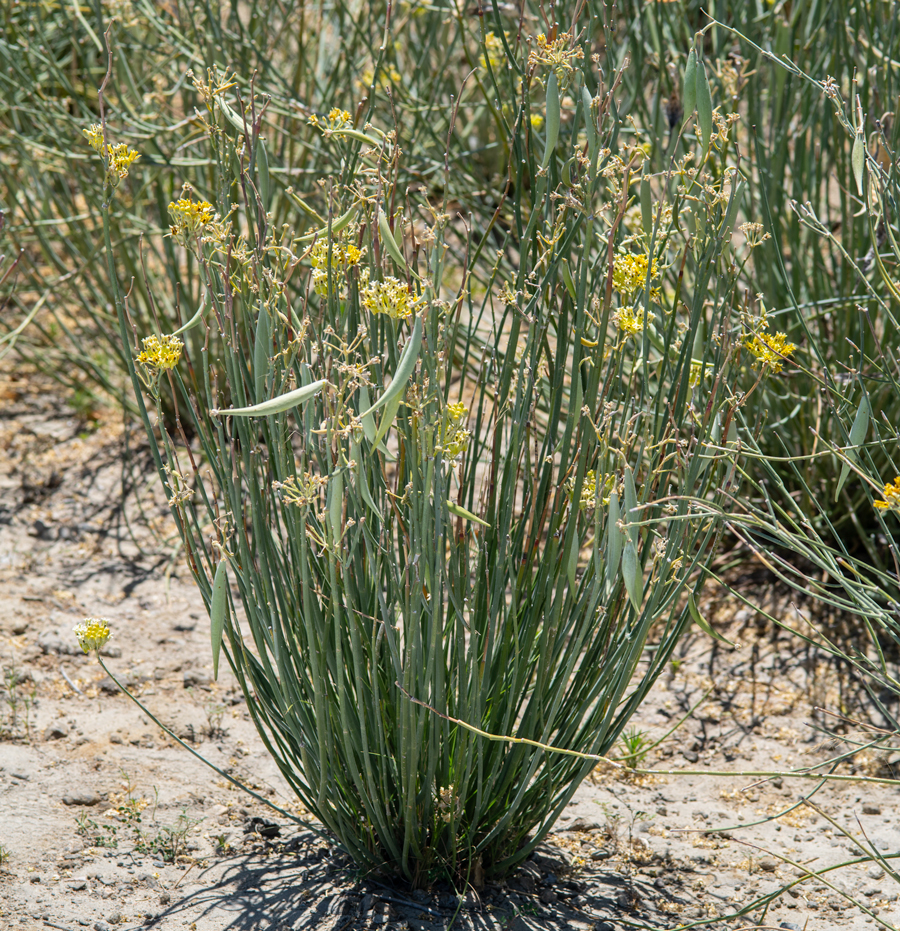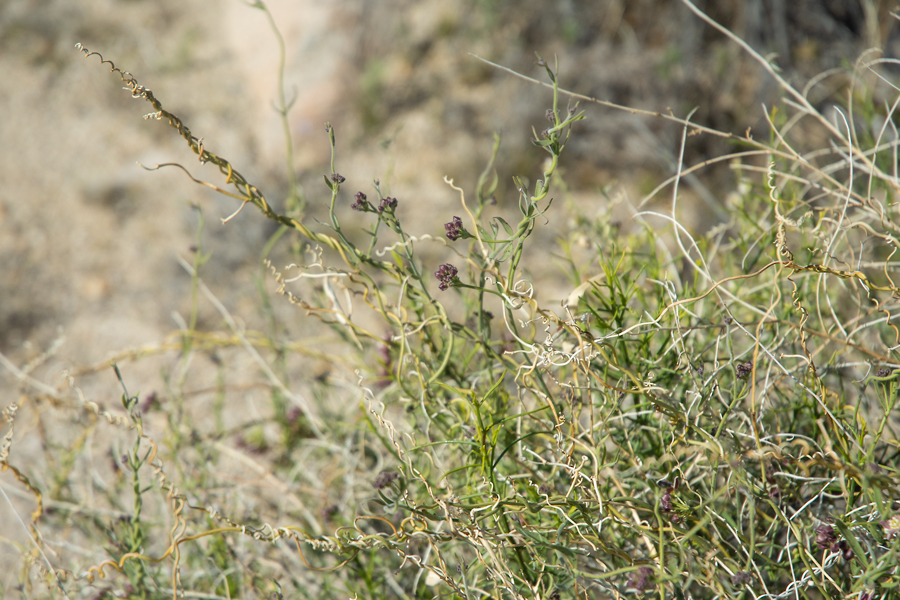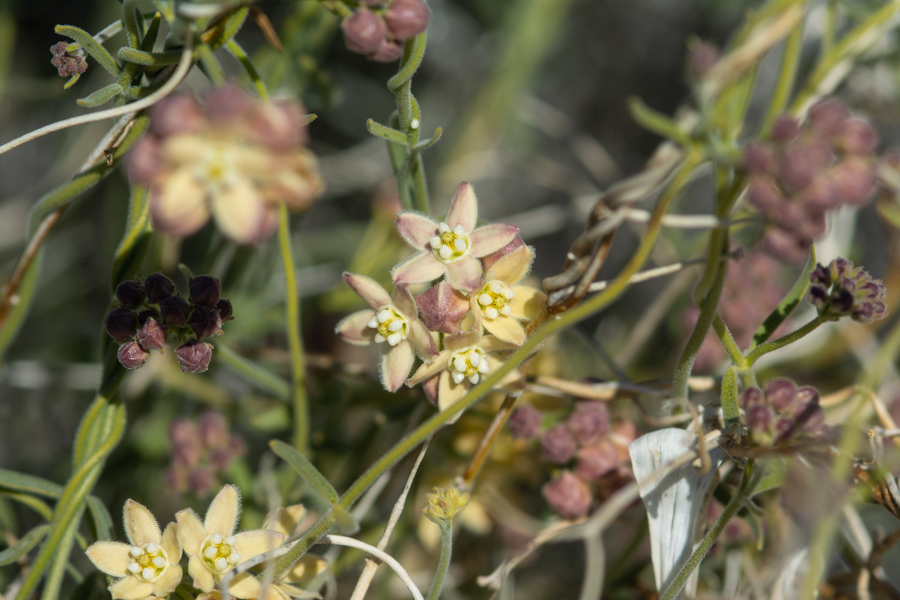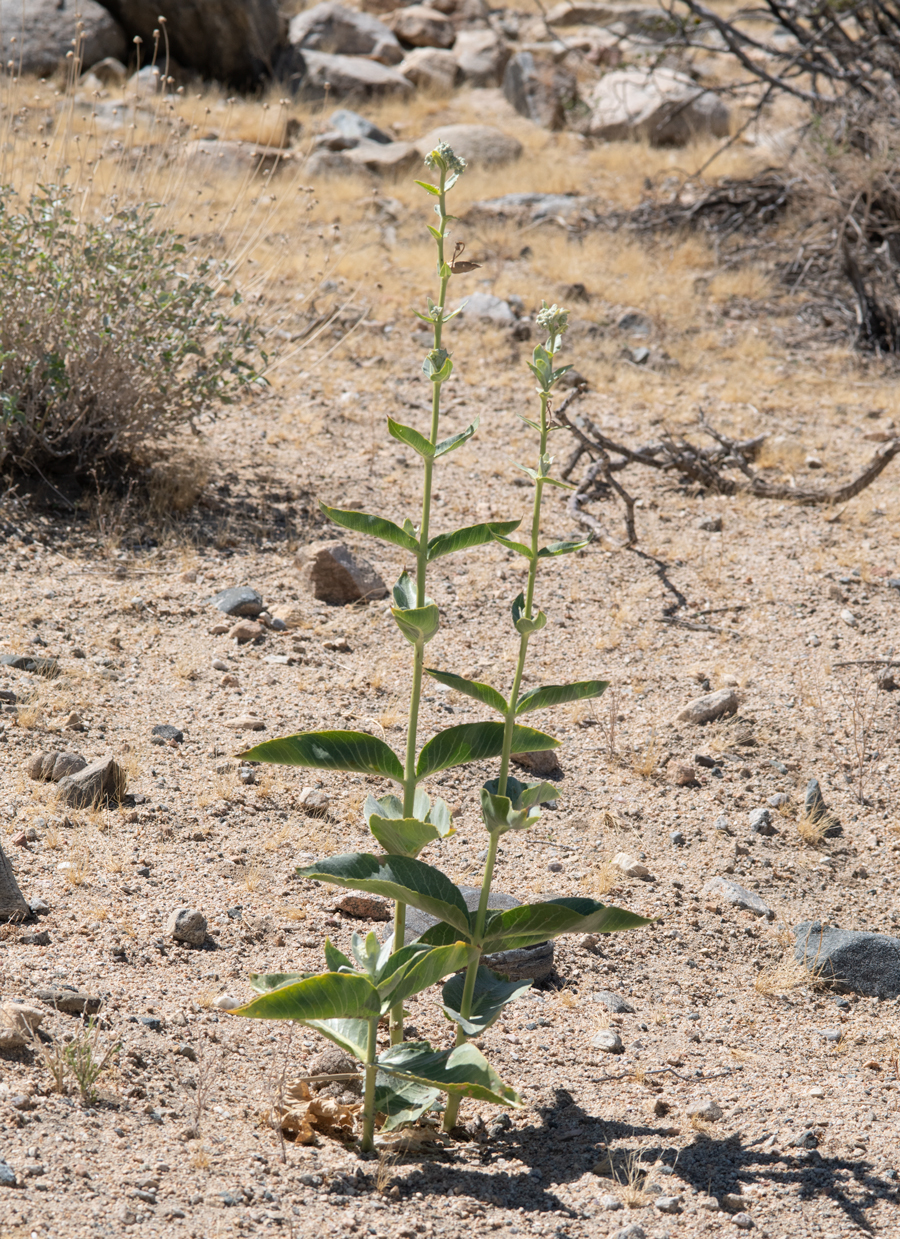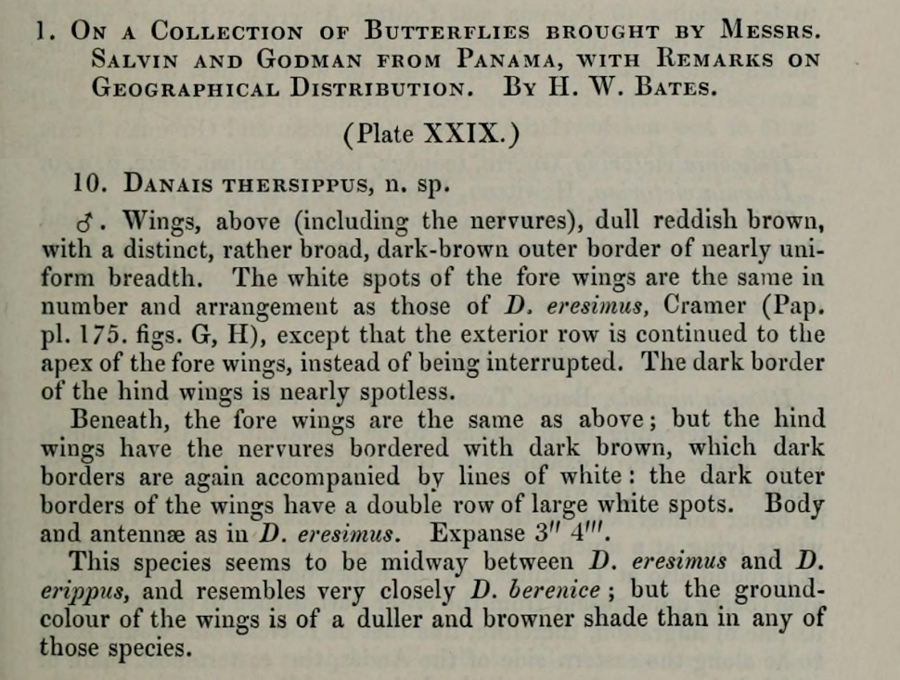Danaus gilippus thersippus
Queen
Queens are overshadowed by and often misidentified as monarchs, their more common and famous relative. But a fresh queen is just as beautiful, the rich golden-brown ground color of the wings rimmed in black with a sprinking of white dots. They can appear pretty much anywhere in southern California, and I've seen them at the beach and - rarely - in my suburban garden. But I see them far more often in the deserts or in large open spaces where wild, native milkweeds may be growing. You may get lucky and come upon hundreds of them taking nectar if you happen upon the right place at the right time.
For host plants, queens are known to use Asclepias erosa, A. subulata and A. albicans, as well as climbing milkweed, Funastrum cynanchoides var. hartwegii and hairy milkweed, Funastrum hirtellum. I have found larvae and eggs on subulata. Queen larvae differ from monarchs in that they have three pairs of filaments, not two. Their color pattern also differs.
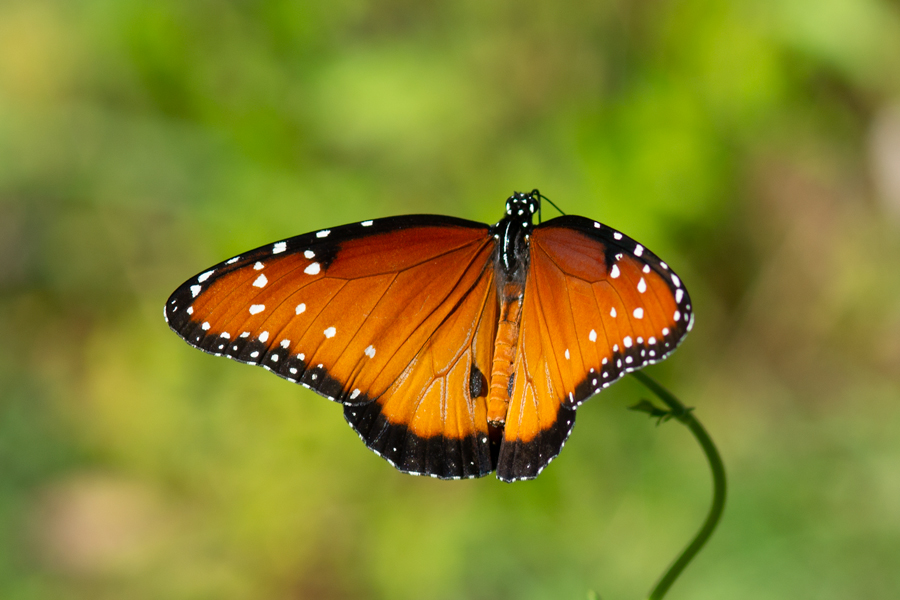
Queens were out by the hundreds taking nectar at Ageratum corymbosum at Boyce Thompson Arboretum near Superior, Arizona. October 14, 2019.
Same day as above, this one showing the ventral side of the wings. There was a plant sale at the Arboretum that day, and I bought a couple of these plants for my own garden. Larger nymphs and pipevine swallowtails preferred these blooms to anything else on the grounds.
I found this female queen at Hellhole Canyon in Anza-Borrego on January 30, 2006. Queens thrive in the deserts.
A female queen at Boyce Thompson Arboretum east of Phoenix, Arizona, September 25, 2007.
A male taking nectar at Horsethief Creek along Cactus Spring Trail. September 21, 2013.
The egg of a queen is very similar to that of the monarch. This was freshly laid on Asclepias subulata in Palm Desert. Oct. 19, 2015.
This larva on Asclepias subulata in my garden is rapidly growing. It's about an inch long here, doubling in length every few days. August 24, 2020.
Asclepias subulata, one of the vine milkweeds, is one that queens find very attractive. This is at the Sunnylands in Rancho Mirage. I've found larvae on this milkweed species and have reared queens on it, so I know it to be a good choice for those wishing to attract this butterfly.
Hairy milkweed, Funastrum hirtellum, is a climbing milkweed of the desert that is a larval food plant for queens.
The flowers and buds of Funastrum hirtellum. This is a pretty common plant on the southern side of Joshua Tree National Park. Did I miss an egg?
Desert milkweed, Asclepias erosa, is often found roadside and other disturbed areas in the Mojave Preserve, Joshua Tree NP, and the canyons draining the northeastern San Bernardino Mountains into the Mojave desert.
The original description of thersippus, from a group of Panamanian butterflies brought to H.W. Bates and published in the Proceedings of the Scientific Meetings of the Zoological Society of London for the year 1863.
©Dennis Walker

